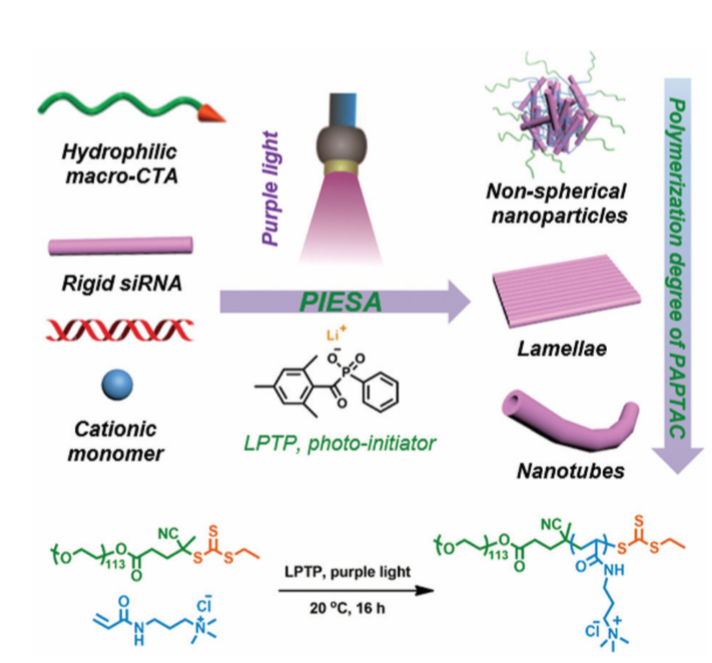Directed arrangement of siRNA via polymerization-induced electrostatic self-assembly
Nanotechnology and nanomaterials serving as short interfering RNA (siRNA) delivery systems have flourished since RNA interference (RNAi) technology was shown to be an effective tool for fighting various diseases via gene silencing. siRNAs are typically short double-stranded RNA molecules with about 19 base pairs (bp) in their core region. This unique molecular structure may allow siRNAs to act as rigid building blocks for bottom-up fabrication of nanostructures beyond their genetic role. In fact, rigid DNA crossovers have been extensively exploited for the preparation of well-defined nanostructures. Moreover, the rigidity of DNA has been thoroughly investigated in the last few years. Although self-assembly of siRNA was extensively investigated, there is still no report highlighting the molecular rigidity of siRNA in its self-assembly behavior. Herein, polymerization-induced electrostatic self-assembly (PIESA) is conducted to mediate the self-assembly behavior of short interfering RNA (siRNA) for the first time.
In PIESA, siRNA not only formed a simple electrostatic polyplex with positively charged polycations, but also facilitated directed self-assembly due to the molecular rigidity of siRNA, leading to appealing nanotubes. This work was published in the Chemical Communications (IF:6.164)
This work was financially supported by the National Natural Science Foundation of China (31800833 and 21977081), Zhejiang Provincial Natural Science of Foundation of China (Z19H180001), the Wenzhou Medical University and Wenzhou Institute of Biomaterials & Engineering (WIBEZD2017001-03).
In PIESA, siRNA not only formed a simple electrostatic polyplex with positively charged polycations, but also facilitated directed self-assembly due to the molecular rigidity of siRNA, leading to appealing nanotubes. This work was published in the Chemical Communications (IF:6.164)
This work was financially supported by the National Natural Science Foundation of China (31800833 and 21977081), Zhejiang Provincial Natural Science of Foundation of China (Z19H180001), the Wenzhou Medical University and Wenzhou Institute of Biomaterials & Engineering (WIBEZD2017001-03).


 Intelligent nanomaterial delivery gene drug system
Intelligent nanomaterial delivery gene drug system Cooperative treatment of nano-drugs
Cooperative treatment of nano-drugs Biomedical tissue engineering
Biomedical tissue engineering Construction and application of integrated nanomaterials for diagnosis and treatment
Construction and application of integrated nanomaterials for diagnosis and treatment